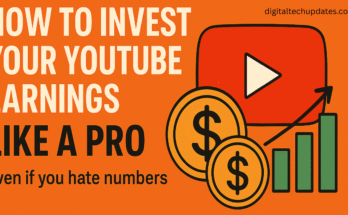Social media marketing is one of the most vital sections of any marketing plan in 2020. Digitization has taken over the world, and the online space is the biggest open market. Using social media to reach more people is the new norm for any company.
While this approach might not be sale-driven, social media marketing’s border idea is to create an ecosystem for your brand. Find people who will follow your work, share updates, and be part of a local community.
As an entrepreneur, if you find social-media ads confusing, here are a few pointers that will help you find some clarity.
1. Don’t be a company, Be a person
The first step towards making your business resonate with users is to not sound like a business. This process is called brand awareness or brand recognition. Social media platforms intend to share stories, and fun content; bombarding with sales-driven ads will repel your user base.
Think of ad and marketing content as a way to gain interactions and drive up engagements. The aim of running marketing-centric ads is to start a dialogue about your work and eventually use subtle sale strategies.
2. Make Connections, Don’t Spam
The digital marketing legend, Gary Vaynerchuk, has been an open advocate of building a relationship on social media. Use ads to build a community of niche users. A community that fits your target audience will eventually buy your products.
When you run Facebook Ads, keep in mind that they do not feel like spam. Keep them creative and informative. Using out-dated and conventional methods will only get you an impression, but very minimal engagements.
3. Planning is Everything
The importance of planning is very vivid with social media ads. The promotion of your campaign or product is not the sole purpose of these ads. You must plan them ahead of time, based on experiences and upcoming events. Run one advertisement for a few weeks, and project the next based on the reaction.
Testing an ad is the second part of this equation. You can use a business ad maker for quality template-ads, but it’s essential to check them before you post.
Review the copy, the visuals, the call-to-action, and the destinations. Also, check the placements on various sections of the platform. For example, on Facebook, ads show on the feed, the story, the side-bar, the messenger, etc. Make sure they make a good fit everywhere.
4. Pick The Right Platform
The right platform can make all the difference. Based on your target audience, you must plan your spending judiciously. For example, if you are looking to sell to a more youth-centric audience and can use colorful designs, then Instagram is the perfect medium.
However, if you are looking to sell to a more diverse market, then Facebook is a better alternative. Since they are a long-running social media platform, they have a broad age group and demographic.
Similarly, options like LinkedIn Marketing, Youtube, and Pinterest, all service varied markets. Rather than blowing your budget on all the platforms, allocate your funds based on the value proposition.
5. Define The Call To Action
An ad without a defined call to action is a grave blunder. Before you set the ad in motion, ask yourself what the goal of the ad is. Is it to generate leads, sell products, get email signups, or any other reasons?
Try to keep the goal of your ads as narrow as possible. Once you know what you need from an ad, it becomes easier to administer. Platforms offer buttons like “Buy Now,” “Learn More,” etc. that help define the message of the advertisement.
6. Video is the way forward
Statistics prove that video ads get much higher engagements when compared to images and text posts. Using small and crisp videos helps convince users about the brands and their products. An online tool, like a product demo maker, lets you make these videos in just a few minutes.
When creating a video ad, the call to actions and the message can be highly specific. The rise of video content has encouraged social media platforms to start video-only sections. The ‘IG-TV’ on Instagram and ‘Watch’ on Facebook are proof that video will soon take-over a large part of the online market.
7. Manage Your Landing Page
A common flaw in running social media ads is often not in the advertisement itself, but at the link destinations. When you run an ad on social media like Facebook and Instagram, they do not just create leads for those specific ads, but all encourage people to see your profile.
Once the user is here, they must still make a purchase or view your products. This action is possible by managing a single landing page. Ensure all your ads reach this page and have vital information for the user.
Additionally, Ensure the bio-links and the profile information is fully optimized. This practice helps users gauge your brand’s authenticity.
Bonus: Understand Ad Fatigue
One pointer that many fail to address is the sentiment behind Ad Fatigue. Ad fatigue is a situation when the audiences have become indifferent or lose interest in your ads-post. This burnout happens from either repetition of the ad, or the lack of original content.
When users see an ad too often, they also tend to report it or flag it. This move will potentially reduce your momentum, and kill your reach. Be mindful of your ad’s insights and know when to change the format or the content of the ads.
Final Thoughts
In closing, the one hidden gem of social media ads is re-targeted ads. These are ads directed at people who have previously interacted with your page or your posts. Using tracking links, and features like Facebook Pixels, you can rediscover the users who came to your doorstep but did not make a purchase.
Keep in mind that social media ads are not going to work the first time. It takes a few rounds of tests before you master the science behind them. The key learning is not to lose faith and halt the progress. Use insights and watch your ads closely to derive the best use from them.




